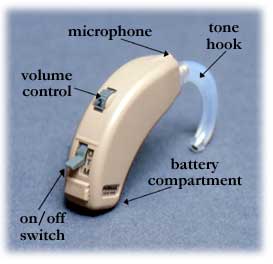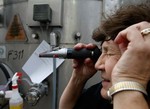 A hearing aid is a device used to help hard-of-hearing people hear sounds better. In the past, a funnel-like amplification cone, called an “ear trumpet” or “ear horn” was used. Also sometimes used was a desk with a built-in amplifier into which a microphone and earphones could be plugged; these worked better than passive ear trumpets but were not portable.
A hearing aid is a device used to help hard-of-hearing people hear sounds better. In the past, a funnel-like amplification cone, called an “ear trumpet” or “ear horn” was used. Also sometimes used was a desk with a built-in amplifier into which a microphone and earphones could be plugged; these worked better than passive ear trumpets but were not portable.




![Reblog this post [with Zemanta]](http://img.zemanta.com/reblog_e.png?x-id=e3bb88ef-ef81-4b7e-ae93-382c2df6f34a)
